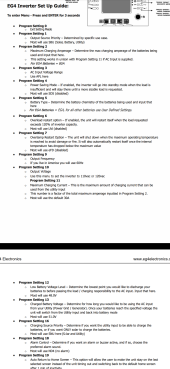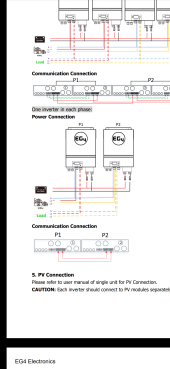With these high tech, multi-function inverters and rack mount batteries all connected and communicating, shouldn't stuff just work?
You'd think in this day and age, with a laptop or smartphone that you could just run through a simple setup wizard where you select the battery model, split phase parallel function, and boom...done. There should also be safe, conservative defaults that simply work, then you tweak from there.
You'd think in this day and age, with a laptop or smartphone that you could just run through a simple setup wizard where you select the battery model, split phase parallel function, and boom...done. There should also be safe, conservative defaults that simply work, then you tweak from there.
Last edited:





